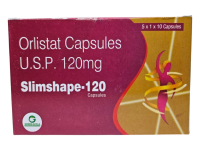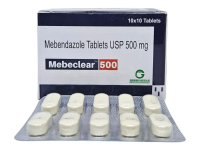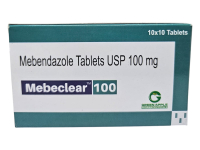Xefta (Gefitinib)
Xefta tablet has an active component called Gefitinib, used for lung cancer like non-small cell lung cancer. Gefitinib is an EGFR inhibitor, acts by interfere with signal transduction of epidermal growth factor receptor in tumor cells.
DESCRIPTION
A Xefta tablet has an active component called Gefitinib, used for lung cancer like non-small cell lung cancer. Gefitinib is an EGFR inhibitor, acts by interfere with signal transduction of epidermal growth factor receptor in tumor cells.
Gefitinib is active only in cancer with mutated and hyper active EGFR. Gefitinib is classified as a prime discriminating inhibitor of epidermal growth factor receptors tyrosine kinase domain.
INDICATION
Xeftacomprising Gefitinib is comes under a class of; Tyrosine kinase inhibitor EGFR inhibitor Anti neoplastic activity
MECHANISM OF ACTION
Tumor cells asserted epidermal growth factor receptors on their cell surface, present in both active and cancer infected cells. These receptors complicated in advancement of cell growth and production. Some epidermal growth factor receptors have exciting mutations (changes) within non small cell lung cancer cells which are supposing to encourage cancer cell growth, restrict the apoptosis, which may raise angiogenic factors and develop metastasis process. Xeftaenclose Gefitinib causes erratic prohibition of tyrosine kinase and provoke abnormality of EGFR, block the autophosphorylation of tyrosine debris similar with receptor, via inhibition of following signaling and blockade EGFR dependent multiplication.
ADME
ABSORPTION
Oral bioavailability: 60% Peak plasma concentration time: 3 to 7 hours
DISTRIBUTION
Volume of distribution: 1400L Human plasma protein bound: 90%
METABOLISM
Xefta is metabolized by hepatic, utilizing CYP3A4 Metabolism is occurring by undergoing biotransformation; Metabolism of N-propoxymorpholino group Methoxy substituent on quinazoline demethylation occur Halogenated phenyl group undergoes oxidative defluorination An active metabolite of Gefitinib: O desmethyl Gefitinib by CYP2D6
ELIMINATION
Xefta is metabolized by liver and eliminated through feces and urine. Half life period: 48 hours Steady state plasma concentration time: 10 days Elimination through; Feces: 86%; urine: less than 4%.
DOSAGE MANAGEMENT
The suggested dosage of Xefta tablets is 250mg should be administered orally as a single dose. The missed dose should not be taken within 12 hours of next dose.
ADMINISTRATION
Xefta tablets are administered orally by taking with or without food. If patients are unable to take the tablets through mouth, must disperse tablets in a 4 to 8 ounces of water and mix it well, then drink the liquid immediately or taken via naso-gastric tube.
DOSAGE ADJUSTMENT
Stop the Xefta therapy, if patients have any of the following effects such as; Elevation of ALT & AST levels; Severe ocular disorders like keratitis High skin reactions Acute upraising or aggravation of pulmonary symptoms like cough, fever, dyspnea
XEFTATHERAPY SHOULD BE DISCONTINUING FOREVER; IN CASE OF
Gastrointestinal perforation Interstitial lung disease Ulcerative keratitis Severe liver damage
STRONG CYP3A4 INDUCERS
In concomitant with strong CYP3A4 inducers, the dosage is increased to 500mg; continue the Xefta therapy with 250mg after cessation of strong CYP3A4 inducers
PRECAUTIONS
INTERSTITIAL LUNG DISEASE
Xefta therapy is discontinued and immediately examine for ILD in any patients who have acute respiratory problems.
LIVER TOXICITY
Patient getting Xefta therapy, accidentally elevate AST & ALT levels and increased bilirubin levels leads to cause hepatotoxicity and to rescue from this condition discontinue the therapy.
GASTROINTESTINAL PERFORATION
Stop the Gefitinib therapy permanently.
PERSISTENT DIARRHEA
Discontinue the Gefitinib therapy
OCULAR DISORDERS
Ocular disorders like corneal erosion, aberrant eyelash growth may occur during the therapy of Xefta. To avoid this problem discontinue the Xefta therapy.
SKIN DISORDERS
Skin disorders like Stevens Johnson’s syndrome, epidermal necrolysis & Erythema multiforme formed during the therapy. Xefta therapy should be suspended or break off.
EMBRYO FETAL TOXICITY
Gefitinib produce fetal harm, like fetotoxicity and neonatal death. Not recommended this therapy in pregnant women and use effective contraception methods.
SIDE EFFECTS
UNWANTED EFFECTS
THE ADVERSE EFFECT OF XEFTA TABLETS
Liver toxicity Gastrointestinal perforation Severe diarrhea Bullous & expoliative skin disorders Ocular disorders Interstitial lung disease
COMMON SIDE EFFECTS
Headache Diarrhea Fatigue Respiratory failure occurs due to pneumonia & pulmonary embolism Mucosal inflammation, tongue ulceration, eye irritation, eyelid Pruritus, edema Elevation of AST, ALT Proteinuria Hemorrhagic cystitis Cutaneous vasculitis Nausea Vomiting Skin reactions Nail disorders Stomatitis Loss of appetite Conjunctivitis Blepharitis Dry eye
DRUG INTERACTION
Xefta tablet combined with strong CYP3A4 inducers like phenytoin, rifampicin, or tricyclic depressant may leads to decreasing the plasma concentration of Gefitinib because of increasing the metabolism. To avoid this problem, while concomitant with these drugs, the dosage of Xefta is increased to 500mg, maintained by 250mg for 7 days after stopping the CYP3A4 inducers. Co administration of Xefta with strong CYP3A4 inhibitors like itraconazole causes elevating the plasma concentration of Gefitinib due to decreasing in metabolism.
Xefta combined with gastric regulator, causes depletion of plasma concentration of Gefitinib. Gastric regulators like proton pump inhibitors, H2 receptors antagonist, or antacids. Xeftatablets are taken 12 hours after the last dose or 12 hours earlier to proton pump inhibitors; Xefta tablets taken at 6 hours after or earlier to the dose of H2 receptor antagonist or antacids. Xefta with warfarin leads to produce hemorrhage, to avoid this problem patients monitored frequently for prothrombin time alteration.
PREGNANCY & LACTATION
Pregnancy category: D Xefta produces fetal harm, even to death. Xefta tablets should not be recommended in pregnancy period; sometimes it may leads to miscarriage. Breast feeding should not be suggested in lactating period.
STORAGE
Xefta tablet container should be stored in room temperature at 20°C to 25°C (68°F to 77°F). Xefta container should be keep away from light, heat and moisture
OVER DOSAGE
There is no particular therapy evaluated for over dosage condition of Gefitinib. If over dosage occurs in a patients receiving therapy, must compensate with adequate supportive therapy and investigate the signs and symptoms of toxicity due to over dosage.
MISSED DOSE
Xefta tablet is a chemo medicine; it is used only under the supervision of medical oncologist. If patient fail to take the dose of Gefitinib must consult with certain medical adviser and take the missed dose. Otherwise the missed dose should not be taken within 12 hours of following dose. In this condition, skip the missed dose and follow the regular schedule.
| Brand name | Xefta |
| Active substance | Gefitinib 250mg |
| Packaging | 10 Tablets |
| Product form | Tablet |
| Strength | 250mg |
There are no comments yet





























